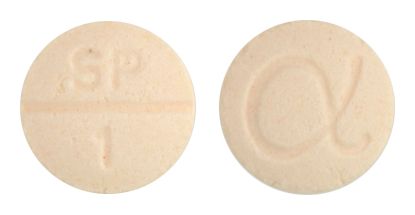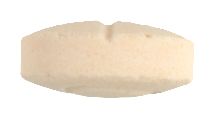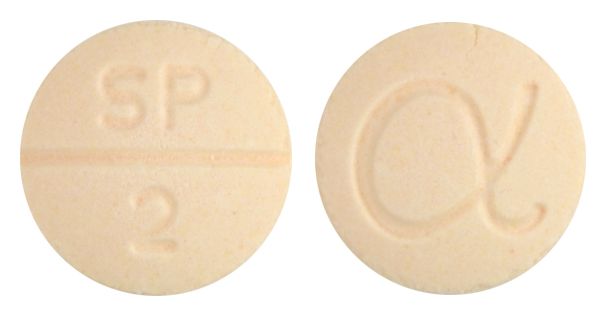Spironolactone (Viatris) TM
Listen to the Pronunciation:
You should seek medical advice in relation to medicines and use only as directed by a healthcare professional. Always read the label. If symptoms persist see your healthcare professional.
Active ingredients: spironolactone
Brand name
(ARTG)
: SPIRONOLACTONE VIATRIS 25 spironolactone 25 mg tablet bottleConsumer Medicine Information (CMI)
Read the CMI leaflet for facts you need to know before, during and after taking your medicine.
Listen to the audio transcription of the CMI leaflet.
For more information about CMIs and how to read them, please visit How to read Consumer Medicine Information (CMI).
What this medicine is used for
(ARTG)
Essential hypertension; oedematous disorders such as oedema and ascites of congestive cardiac failure, cirrhosis of the liver and nephrotic syndrome; diagnosis and treatment of primary aldosteronism; as adjunctive therapy in malignant hypertension; in diuretic induced hypokalaemia when other measures are considered inappropriate or inadequate; prophylaxis of hypokalaemia in patients taking digitalis when other measures are considered inadequate or inappropriate; hirsutism. Essential hypertension. Spironolactone, when used alone, is effective in lowering both systolic and diastolic blood pressure. Spironolactone improves the hypotensive action of thiazide diuretics, while at the same time reducing or preventing potassium loss due to the thiazide. Spironolactone enhances the effectiveness of other antihypertensive agents such as beta-blockers, vasodilators, etc. Congestive cardiac failure. When used alone, spironolactone is effective in the management of oedema and sodium retention associated with congestive cardiac failure. Spironolactone may be used in combination with a thiazide or other conventional diuretics for achieving diuresis in patients whose oedema is resistant to a thiazide or other conventional diuretics. Unlike conventional diuretics, spironolactone does not produce hypokalaemia. When administered with a thiazide or other conventional diuretics, spironolactone offsets hypokalaemia induced by these diuretics. The prevention of potassium loss is particularly important in the treatment of digitalised patients, since digitalis intoxication may be precipitated if hypokalaemia is induced by conventional diuretic therapy. Hepatic cirrhosis with ascites and oedema. When used alone, spironolactone is frequently adequate for the relief of ascites and oedema associated with hepatic cirrhosis. It provides a mild and even diuresis and prevents excessive potassium excretion caused by thiazide diuretics, thus avoiding possible precipitation of hepatic coma. Nephrotic syndrome. Although glucocorticoids, whose anti-inflammatory activity appears to benefit the primary pathological process in the renal glomerulus, should probably be employed first, spironolactone either alone or in combination with a conventional diuretic is useful for inducing diuresis. Primary hyperaldosteronism. Spironolactone may be used to establish the diagnosis of primary hyperaldosteronism by therapeutic trial. Spironolactone may also be used for the short-term preoperative treatment of patients with primary hyperaldosteronism, long-term maintenance therapy for patients with discrete aldosterone producing adrenal adenomas who are judged to be poor operative risks (or who decline surgery), and long-term maintenance therapy for patients with bilateral micro- or macronodular adrenal hyperplasia (idiopathic hyperaldosteronism). Hirsutism in females. Spironolactone is effective in the treatment of females with hirsutism, an androgen related increase in facial and body hair. A reduction in hair growth, hair shaft diameter and hair pigmentation is seen. Use of Spiractin should be considered only after all other alternatives of non-drug therapy have been explored. For women of childbearing age, see Contraindications and Use in Pregnancy.
How to use this medicine
(ARTG)
This medicine contains one component only.
Component :
- Tablet, uncoated
- Oral
- 7mm pale orange, normal convex, peppermint flavoured tablet marked "SP" breakline "1" on one side, " alpha" symbol on the reverse.
Images


Images © Medicines Information Pty Ltd.
Storage conditions
(ARTG)
- Store below 30 degrees Celsius
- Shelf lifetime is 3 Years.
Do I need a prescription ?
(ARTG)
These medicine packs are available from a pharmacist and requires a prescription. It is
- 100 tablets pack
Is this medicine subsidised ?
(PBS)
This medicine was verified as being available on the PBS (Pharmaceutical Benefits Scheme) on December, 1 2025. To learn more about this subsidy, visit the Pharmaceutical Benefits Scheme (PBS) website.
Pregnant or planning a pregnancy ?
(AHT)
For the active ingredient spironolactone
You should seek advice from your doctor or pharmacist about taking this medicine. They can help you balance the risks and the benefits of this medicine during pregnancy.
Reporting side effects
You can help ensure medicines are safe by reporting the side effects you experience.
You can report side effects to your doctor, or directly at www.tga.gov.au/reporting-problems











